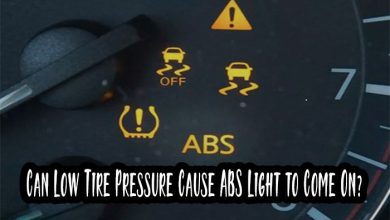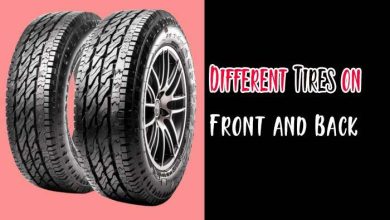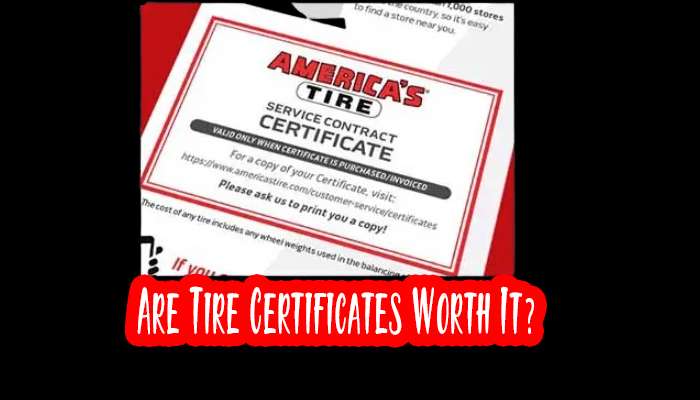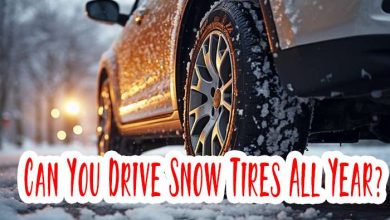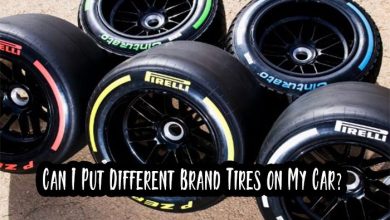Is it Bad to Overinflate Tires a Little?
Hey there, fellow tire enthusiasts! If you’ve ever wondered about the intricacies of tire inflation and whether it’s a good idea to overinflate your tires just a tad, you’ve come to the right place.
I’m here to demystify the art of tire pressure and suggest whether it’s bad to overinflate your tires, even just a smidge.
Read my recent post- Kia K5 Tire Pressure.
The Basics of Tire Inflation
Let’s kick things off by understanding the fundamental principles of tire inflation. Your tires are not just rubber doughnuts but crucial in ensuring your safety and your vehicle’s performance.
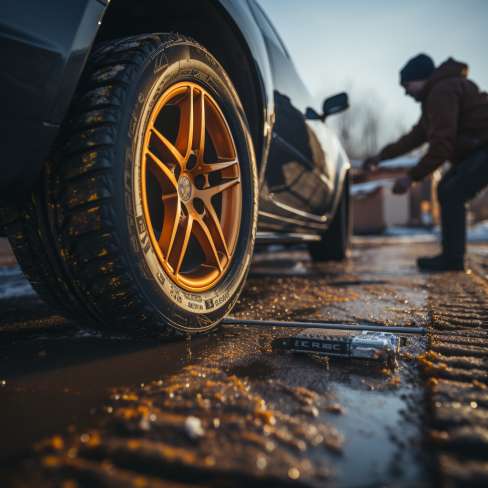
Proper tire inflation is key to achieving this. When adequately inflated, tires offer a stable and safe ride. Insufficient inflation can lead to reduced fuel efficiency and uneven tire wear.
What is Overinflation?
Now, let’s talk about overinflation. Overinflating your tires refers to the act of putting more air pressure in them than what’s recommended by the manufacturer.
Each vehicle has a specific tire pressure recommended in the owner’s manual and is often found on a sticker in the door jamb. Overinflation, in essence, means exceeding this recommended pressure.
Is it Bad to Overinflate Tires a Little?
Is it bad to overinflate your tires just a tad? The short answer is, yes, it can be bad. When you overinflate your tires, even slightly, several issues can arise:

- Reduced Traction: Overinflated tires have a smaller contact patch with the road. This means less grip, especially in wet or icy conditions.
- Rough Ride: Overinflated tires are stiffer, leading to a bumpier and less comfortable ride.
- Uneven Wear: The centre of the tire carries more weight when overinflated, leading to uneven wear and shorter tire life.
- Blowout Risk: Excessive pressure increases the risk of a tire blowout, which can be dangerous, especially at high speeds.
How Much Overinflation is Safe?
If you’re thinking about adding a little extra air to your tires, there’s a safe threshold you can adhere to. Generally, it’s considered safe to overinflate your tires by 3 psi (pounds per square inch) above the manufacturer’s recommendation. Anything beyond that might lead to the problems we discussed earlier.
The Negative Effects of Overinflation
Now, let’s delve deeper into the negative effects of overinflating your tires:
- Reduced Traction: Overinflated tires are more likely to skid on slippery surfaces, increasing the risk of accidents.
- Harsher Ride: Your vehicle will transmit more road imperfections to you, leading to a less comfortable ride.
- Tire Wear: Overinflation causes the center of the tire to wear out faster than the edges, leading to a shorter lifespan.
- Blowouts: Overinflated tires are more prone to blowouts, which can be catastrophic, especially at high speeds.
- Impact on Fuel Efficiency: It might sound counterintuitive, but overinflated tires can reduce fuel efficiency because of decreased traction.
Read Also: Why Did My Tire Come Off the Rim?
How to Adjust Tire Pressure?
If you’ve overinflated your tires and want to correct it, follow these steps:
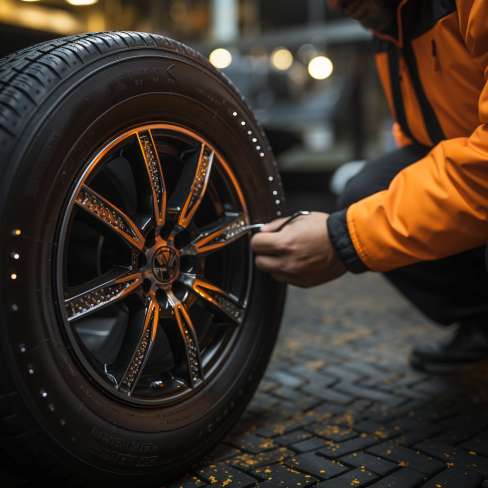
- Check Current Pressure: Use a tire pressure gauge to measure your tire’s current pressure.
- Find the Recommended Pressure: Refer to your vehicle’s owner’s manual or the sticker on the door jamb to find the recommended pressure.
- Deflate Carefully: If you’ve exceeded the recommended pressure, gently release some air until you reach the right level.
- Recheck Pressure: Use the gauge to double-check that you’ve reached the correct pressure. Make sure all tires are equally inflated.
- Maintain Regular Checks: To ensure the right tire pressure, make it a habit to check your tires regularly, especially before long journeys.
Frequently Asked Questions
Is it OK to Overinflate a Tire by 1 psi?
Overinflating your tires by 1 psi is safe and should not cause significant issues. However, it’s always best to stick to the manufacturer’s recommended tire pressure for the best performance and safety.
Is it OK to Overinflate Tires by 3 psi?
A slight overinflation of 3 psi above the manufacturer’s recommendation is often considered safe and should not lead to severe problems. However, it’s still advisable to maintain the recommended pressure for ideal tire performance and safety.
Is it OK to Overinflate a Tire by 5 psi?
Overinflating a tire by 5 psi is pushing the boundaries of safety. While it might not lead to an immediate blowout, it can result in a harsher ride, reduced traction, uneven tire wear, and a higher risk of blowouts, especially at high speeds. It’s best to avoid overinflating your tires by such a significant margin.
Can I overinflate my tires by a few PSI for better fuel efficiency?
A small overinflation might result in slightly better fuel efficiency, but it’s not significantly improved. The downsides, including a bumpier ride and increased tire wear, outweigh the benefits. It’s best to stick to the recommended PSI range.
Is it dangerous to overinflate my tires significantly?
Significantly overinflating your tires can be dangerous. It reduces traction, impairs handling, and increases the risk of blowouts, especially when encountering road hazards. It’s essential to follow your vehicle manufacturer’s recommended PSI range.
Can I rely on my car’s tire pressure monitoring system (TPMS)?
The TPMS is a helpful tool that alerts you to significant changes in tire pressure. However, it’s not always 100% accurate, and it usually triggers warnings when the pressure is far from the recommended range. Regular manual checks with a pressure gauge are still recommended for precise tire maintenance.
Conclusion
Tire pressure is critical in ensuring your safety on the road and your vehicle’s performance. While it might be tempting to overinflate your tires for extra efficiency, staying within the recommended pressure range is essential.
Overinflating, even just a bit, can lead to reduced traction, a rougher ride, uneven tire wear, and an increased risk of blowouts.
Reference Link
For more information on tire maintenance and safety, check out the National Highway Traffic Safety Administration (NHTSA) Tire Safety Tips.
Glossary
- Tire Inflation: The act of adjusting the air pressure in a tire to meet the manufacturer’s recommended levels.
- Overinflation: Adding more air pressure to a tire than the manufacturer’s recommendation.
- Blowout: A sudden and often catastrophic tire failure, resulting in a loss of control over the vehicle.
- Traction: The grip or adhesion between the tires and the road surface is crucial for safe driving.
- Contact Patch: The area of a tire that makes direct contact with the road.
- Fuel Efficiency: The measure of how effectively a vehicle converts fuel into driving energy.
- Tire Lifespan: The duration a tire remains in optimal condition before needing replacement.
